As a structured system, enterprises can advance systematically.
Editor’s note: This article is from WeChat public account ” Lakeside University “ (ID: hupansanbanfu), author Lu Qi.
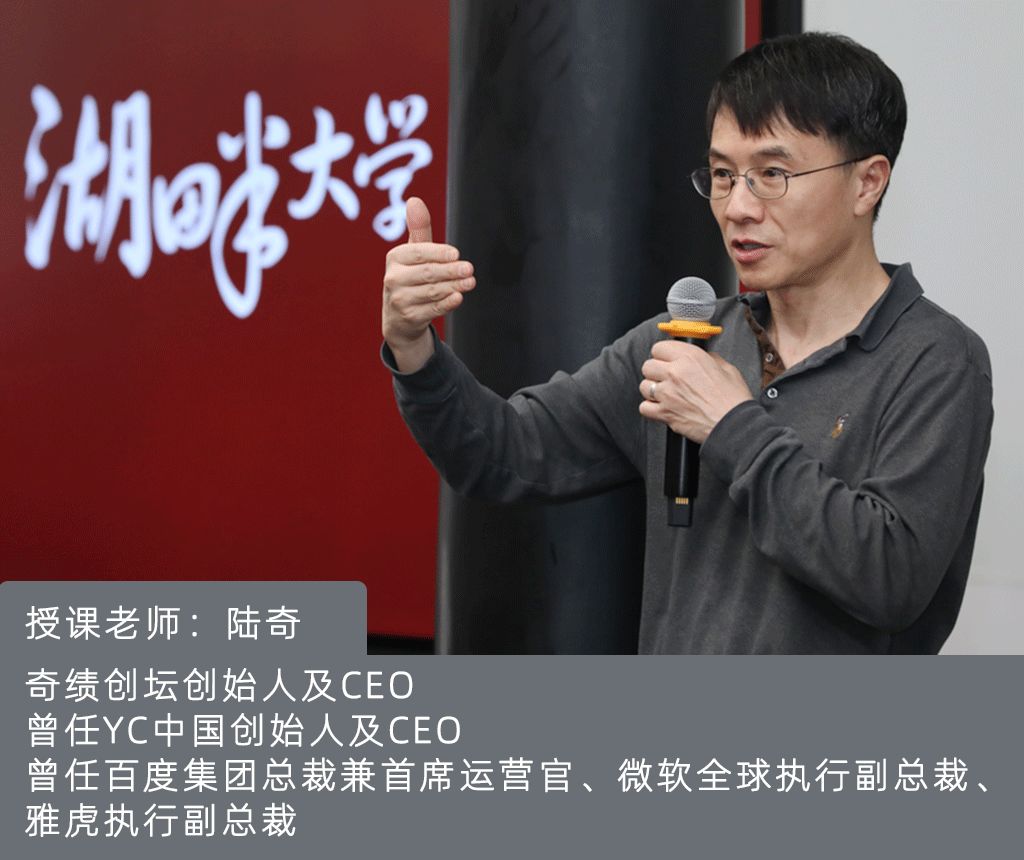
“Dr. Lu Qi is the person with the highest management positions and the broadest vision in technology companies in the entire Chinese circle. He is also the manager of the technology company that I respect and recognize most. In the future, all companies will be transformed into technology companies. Strategy, layout and vision will determine the roof of each enterprise. From his perspective, I hope to see his company’s future technical layout, vision and judgment, just like standing on the shoulders of giants. “
—— Li Xiang, a student and founder of the fifth phase of the lakeside
Not long ago, Lu Qi, founder and CEO of MiraclePlus, took to the lakeside podium and gave a “skills” lesson for Lakeside Five students-“The Role of Technology in Economic and Enterprise Development” , Systematically explain the role of technology in the development of enterprises and future technology development trends and business opportunities.
The following is an excerpt from the course content.
How can a company accelerate its development in a systematic way? What role does technology play in this system?
The information structure of human organizational behavior is similar, such as religion, rivers and lakes gangs, etc.-all drive momentum through mission, vision, and values, and then set a strategy, and at the same time formulate operating mechanisms and effectively implement the strategy. In this process, we have products, business models, markets, technologies, and continue to advance …
Furthermore, using culture as a link to connect talents and organizations makes them more and more effective.
In fact, the same is true of enterprises. As a structured system, companies can advance systematically .
Design of corporate capital structure, including social responsibility and governance structure. This area is getting more and more attention, especially digital platforms, such as content, social networking, driverless, etc., are directly linked to government regulation.
I will endBased on my own experience, I summarize the architecture that drives enterprise development from these ten aspects, focusing on the role of technology.
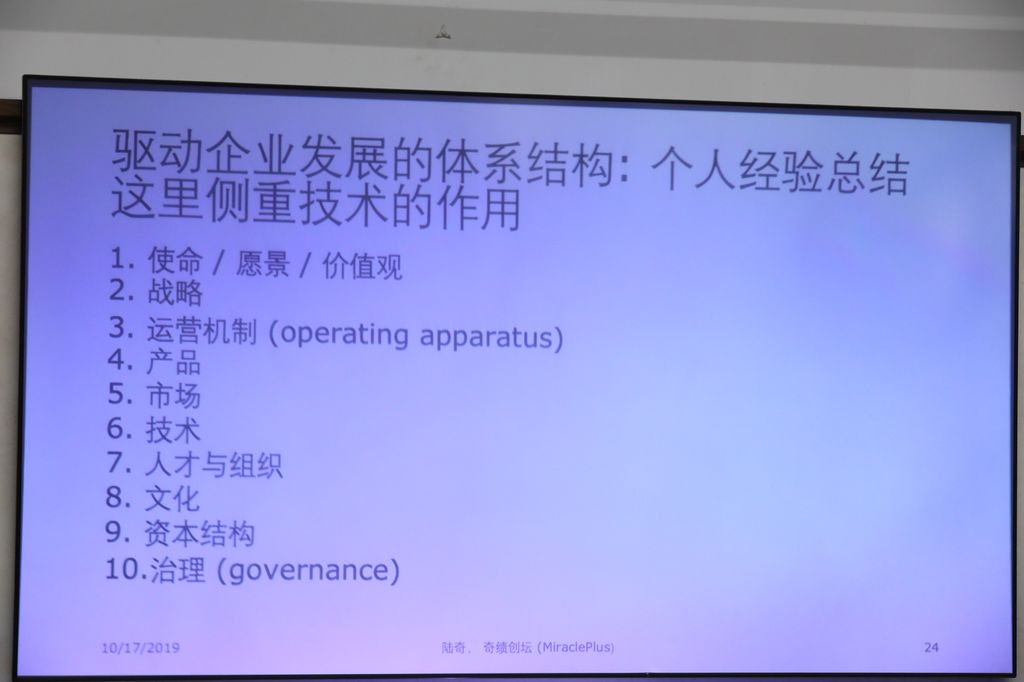
01 Mission vision values
The mission, vision, and values of the enterprise have clarified the motivation and direction of the enterprise under the principle of people-oriented, and technology is playing an increasingly important role in the mission, vision and values of the enterprise. Like Apple, Microsoft, and Google, technology is more important in the mission vision.
Take Microsoft as an example, what kind of company is Microsoft? Microsoft will definitely not open restaurants and socialize, but it may do agriculture and communication. why?
Because the core of Microsoft is to provide high value at high scale through technology. “If we don’t exist, then many companies using our products will not work properly.” Microsoft can make each employee emotionally do those “let others rely on Microsoft” business.
Innovation changes the world. Technology is the biggest driving force for innovation, and enterprises are the carriers of innovation. I suggest that when thinking about the company’s mission vision, you can try to integrate technology naturally.
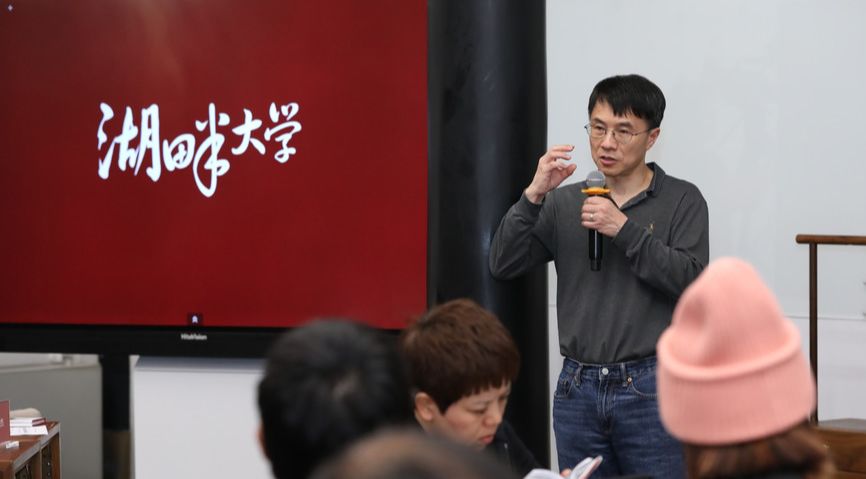
02 Strategy
Three things you need to do about strategy: determine the future; Make In & Out Decision; take a valuable place in the market; make yourself attackable and defensive.
First, judge the future. When a company makes a strategy, it must first judge the intersection of technology, market, and product, which means that any business must be technically feasible, marketable, and product-demanding.
Technology is relatively easy. You can use some existing rules to judge, such as storage, bandwidth, and computing unit. It is not difficult to judge the market, the most difficult is the product, that is, the judgment of human needs.
Second, judge the timing. You have to judge the timing, because it’s just as bad to go too early or too late.
Microsoft has entered too early in many fields, the first to be a tablet and the first to be a smart phone, The first to do AR / VR. Apple is not the first to do anything, iPod is not, iPhone is not, iPad is not, and watches are not.
When should I go in? One should look at this curve-from the book “Crossing the Divide”, which is a reflection of human social collective psychology-technology-driven products will experience this curve.
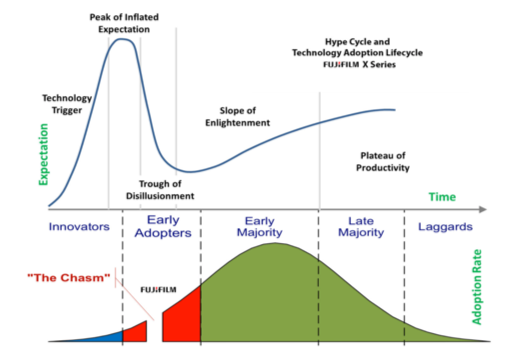
Before the chasm, there were two groups of people: the first group of people (technology enthusiasts) were willing to try new things, as long as they were new and technology-related, they were willing to try; the second group of people (visionary) Have long-term ideas for the enterprise, and find and try new products and technologies in order to realize the long-term vision of the enterprise.
The divide appears in the next wave of people adopting this technology product. They are all Early Adopters. Their judgment criterion is that people around me use this product.
Most companies die at the gap, because this gap cannot be passed by one by one, but everyone in the industry must pass together. Touted as the earliest leaders, they are often replaced in the end. And when Apple chose to enter, the market was already educated, meaning that pragmatic people have begun to buy this thing.
There are five key points to making in and out decisions:
The first is the choice of the track. If you choose the wrong track, the value of the company will not be very high.
Second, it depends on the strength of the company and whether the company has the overall ability to enter the track. For example, if Yao Ming is going to play table tennis, no one will be afraid of him; if he goes to play volleyball, everyone may respect him. How to judge it? When you decide to enter a certain track, there are several test points to refer to: whether the customers of this track will respect you, will they consider you when the product comes out, and will the partners consider you.
Third is the market strength, “fish to pond ratio”, find a fish pond, you are the largest fish inside, you must pay attention to this early.
Fourth is the strength of the product, depending on whether your product differentiation is strong, what you have but not others. Differentiation is not necessarily something new, but something that is not valuable for competing products, and can even be very old.
Five is execution ability. I saw that most entrepreneurs mistakenly put execution ability first, and rushed into a scuffled market. The final result is often miserable.
Third, letGene Pool. Is there no gene in the company to develop new products and can only be built slowly after purchase? This question also needs the attention of the CEO. Is your company’s talent gene pool insufficient?
08 Culture
In this regard, I only talk about the management of engineers.
I think internal open source is the best way to manage engineers. Engineers generally do n’t make a fool of themselves, write reports, and often fail to get corresponding good results in functional evaluation. If you use the internal open source method and rely on the code to speak, everyone will improve their careers with real capabilities.
Another is platform culture. The first-party code is equal to the third-party code, which makes the internal platform stronger and the code more solid.
09 Capital structure
I think that after entering the secondary market, many companies will have a high probability of chronic death. Because there are enough retail customers in the secondary market, this requires the company’s performance to be sufficiently predictable, and this predictability reduces the company’s innovation heartbeat rate.
But if you do n’t go public, the primary market will not benefit your employees. How to weigh and find a better capital structure is something that every CEO must seriously consider.
At the same time, each enterprise must establish appropriate investment management, and more and more ecology needs to be established through investment. And it is recommended that everyone pay attention to other production capital, especially data capital, data may be capitalized at a certain time.
10 governance
A founder and CEO cannot lose control of the company. This kind of out of control will lead to the company’s potential out of control, because the power structure and interest structure are different, and the founder CEO wants to change the world.
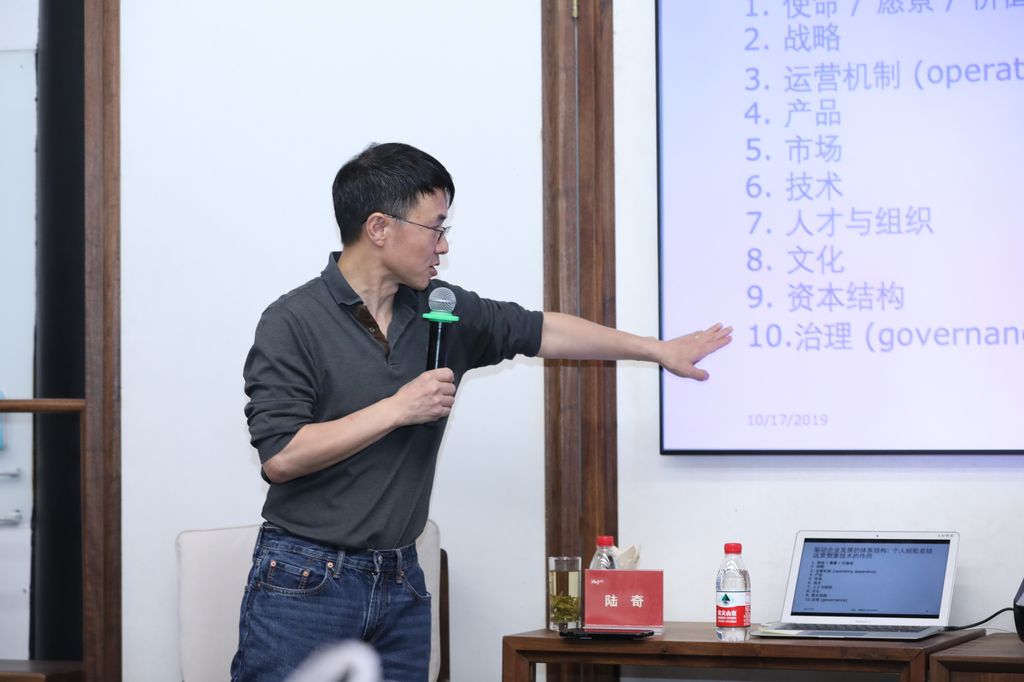
In addition, I want to explore the social responsibility governance of digital platforms based on Externality. If we make a deal and you sell something to me, it will have an impact outside of the two of us and it will have a great impact, which will result in social responsibility.
Facebook is a typical sample. A piece of news on Facebook is only about click-through rate for Facebook, but it may also affect US elections and cause US shocks. Its outreach is far beyond Facebook ’s own. Revenue and user experience. How to make a platform like Facebook have a reasonable governance structure, so that extension can be controlled?
I think driverless cars have a similar problem. Although it has nothing to do with politics, it has to do with safety and life. How to manage extension with digital technology is a new generation